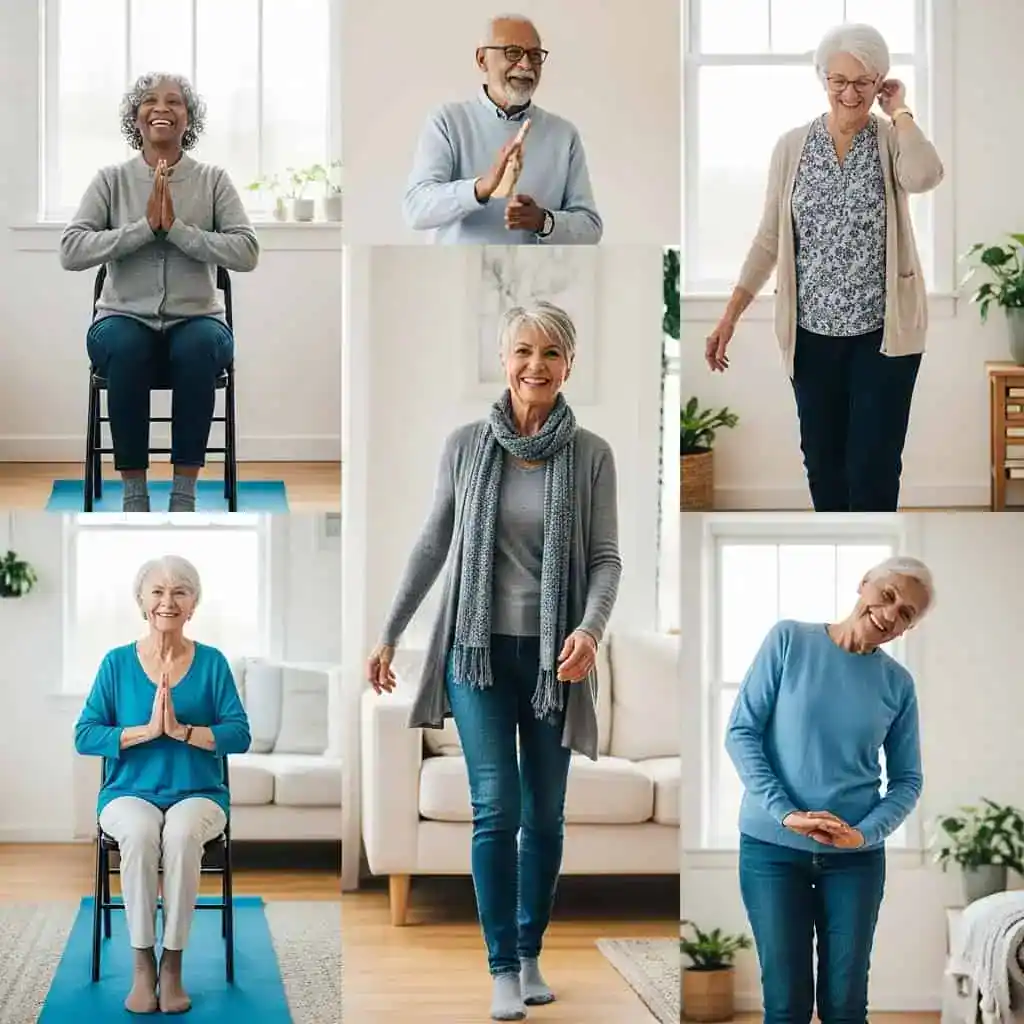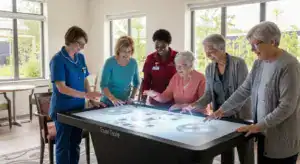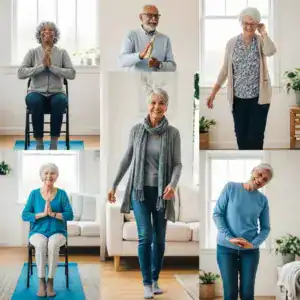The Power of Movement: Why Exercise Matters for Seniors
It’s a common misconception that as we age, we should slow down and rest more. In reality, the opposite is true. While the intensity and type of exercise may shift, consistent physical activity offers a wealth of benefits for older adults, including:
- Improved Balance and Reduced Fall Risk: Falls are a leading cause of injury among seniors. Exercises that target balance and core strength significantly reduce this risk, promoting greater confidence and independence.
- Enhanced Muscle Strength and Bone Density: Sarcopenia (age-related muscle loss) and osteoporosis (bone weakening) are common concerns. Strength training, even with bodyweight or light resistance, helps combat these conditions, making daily tasks easier and protecting against fractures.
- Increased Flexibility and Range of Motion: Stiffness and joint pain can limit movement. Regular stretching and flexibility exercises improve joint health, reduce discomfort, and allow for a wider range of motion in everyday activities.
- Better Cardiovascular Health: Low-impact aerobic exercises strengthen the heart and lungs, improve circulation, and help manage blood pressure, cholesterol, and blood sugar levels, reducing the risk of heart disease, stroke, and type 2 diabetes.
- Boosted Mood and Cognitive Function: Exercise is a powerful mood enhancer, helping to alleviate symptoms of depression and anxiety. It also supports brain health, improving memory, focus, and overall cognitive function.
- Pain Management: For those with chronic conditions like arthritis, gentle exercise can actually reduce pain and stiffness by lubricating joints and strengthening supporting muscles.
- Improved Sleep Quality: Regular physical activity can lead to deeper, more restful sleep, contributing to better energy levels and overall well-being.
- Maintenance of Independent Living: The ability to perform daily tasks like getting out of a chair, climbing stairs, or carrying groceries directly relates to physical fitness. Exercise empowers seniors to maintain their independence for longer.
Before You Begin: Important Considerations
Before embarking on any new exercise program, especially for seniors, it’s crucial to consult with your healthcare provider. They can assess your current health status, identify any limitations, and recommend appropriate modifications. Once you have the green light, keep these tips in mind:
- Start Slow and Listen to Your Body: Don’t overdo it, especially when starting. Begin with fewer repetitions or shorter durations and gradually increase as your strength and stamina improve. If you feel any sharp pain, stop immediately.
- Proper Footwear: Wear comfortable, supportive, non-slip shoes to prevent falls and provide stability.
- Stay Hydrated: Drink water before, during, and after your workout, even if you don’t feel thirsty.
- Use Support as Needed: Many exercises can be performed with the aid of a sturdy chair, wall, or counter for balance and stability.
- Consistency is Key: Aim for regular workouts, even if they are short. Consistency is more important than intensity when building sustainable fitness habits.
- Warm-Up and Cool-Down: Always begin with a gentle warm-up to prepare your muscles and end with a cool-down to aid recovery and flexibility.
The Essential Trio: Types of Exercises for Seniors
A well-rounded senior exercise program should incorporate three main types of exercises:
- Aerobic (Cardiovascular) Exercises: These elevate your heart rate and improve endurance. Think brisk walking in place, marching, or even dancing.
- Strength Training Exercises: These build and maintain muscle mass, crucial for daily activities and bone health. Bodyweight exercises, resistance bands, or light dumbbells are perfect for home use.
- Balance and Flexibility Exercises: These enhance coordination, reduce fall risk, and improve range of motion. Tai Chi, yoga, and simple stretches fall into this category.
Now, let’s dive into our 10 safe and effective exercises!
10 Safe and Effective Exercises for Seniors at Home
These exercises are designed to be low-impact, adaptable, and require minimal to no equipment. Remember to perform each movement slowly and with control.
Warm-Up (5-10 minutes before your workout):
Begin your workout with gentle movements to prepare your muscles and increase blood flow.
- Marching in Place:
- Focus: Cardiovascular, general warm-up.
- How to: Stand tall, either free-standing or holding onto a chair for support. Gently lift one knee towards your chest, then lower it. Alternate legs, marching slowly and steadily.
- Repetitions: Continue for 2-3 minutes, aiming for a gentle increase in heart rate.
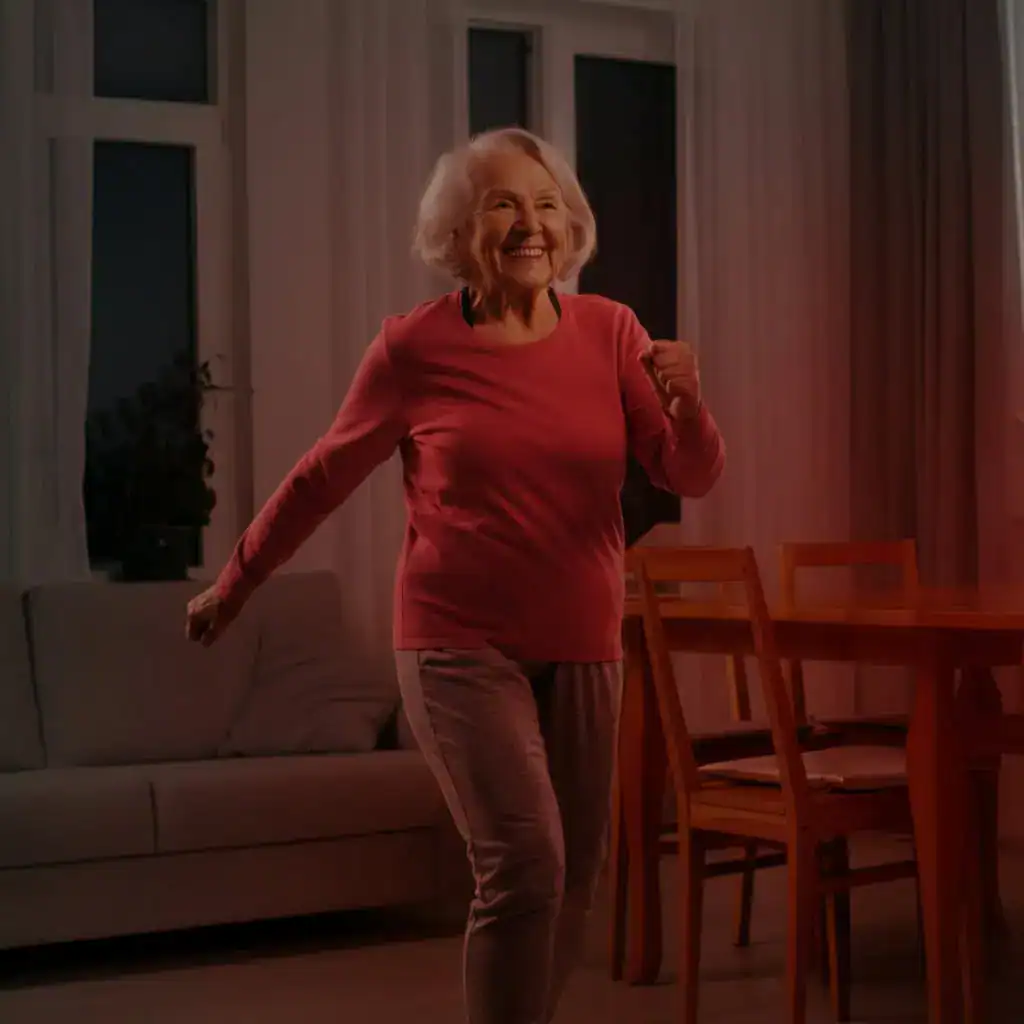
- Arm Circles:
- Focus: Shoulder mobility, upper body warm-up.
- How to: Stand or sit with your back straight. Extend your arms out to your sides at shoulder height. Make small forward circles with your arms, gradually increasing the size. After 10-15 seconds, reverse the direction and make backward circles.
- Repetitions: Perform 2-3 sets.
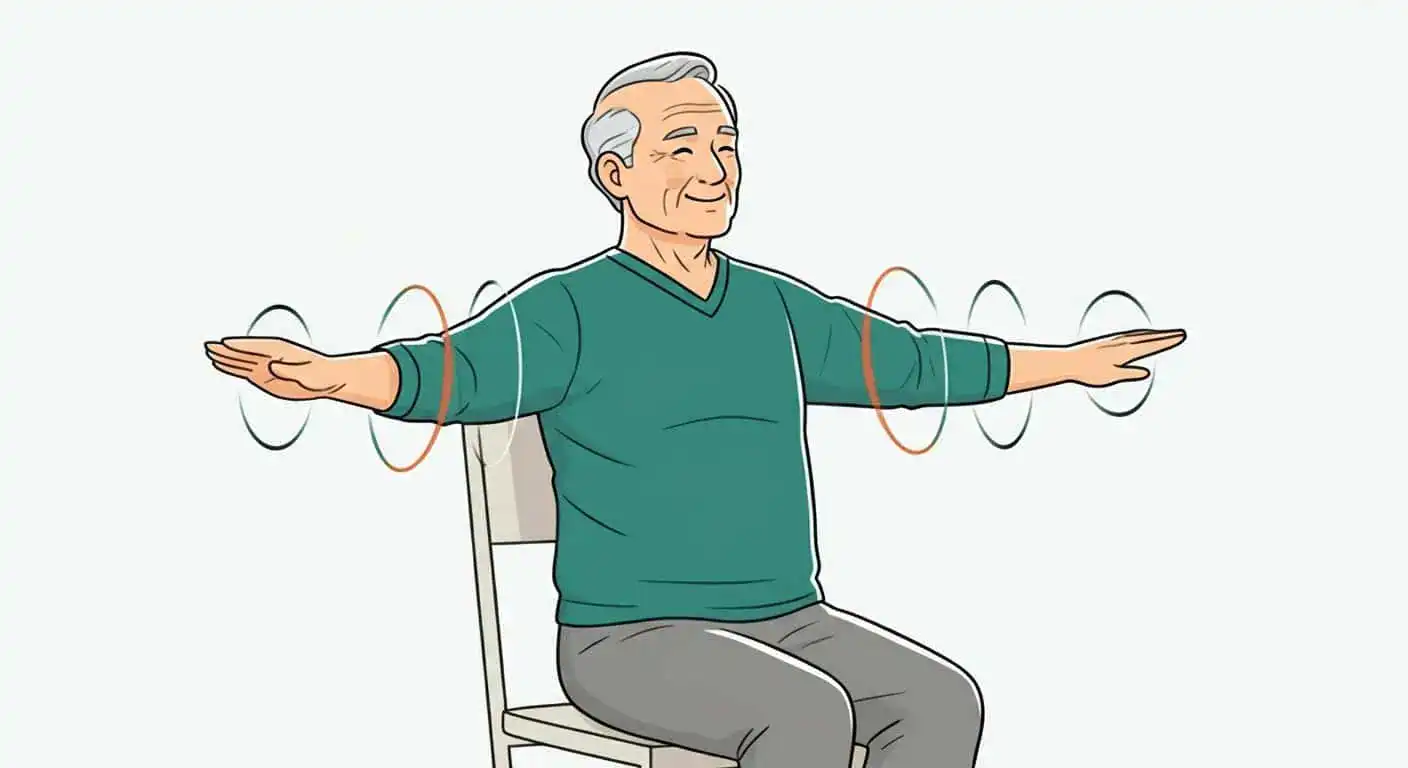
Strength & Balance Exercises:
- Chair Squats (Sit-to-Stands):
- Focus: Lower body strength, balance.
- How to: Stand in front of a sturdy chair with your feet shoulder-width apart. Slowly lower your hips as if you are going to sit down, keeping your chest up and core engaged. Just before you sit, push through your heels to return to a standing position.
- Modification for Limited Mobility: Fully sit down in the chair and then stand up, using your arms for assistance if needed. You can also place a pillow on the chair to raise the seat height.
- Repetitions: Aim for 8-12 repetitions. Rest and repeat for 2-3 sets.
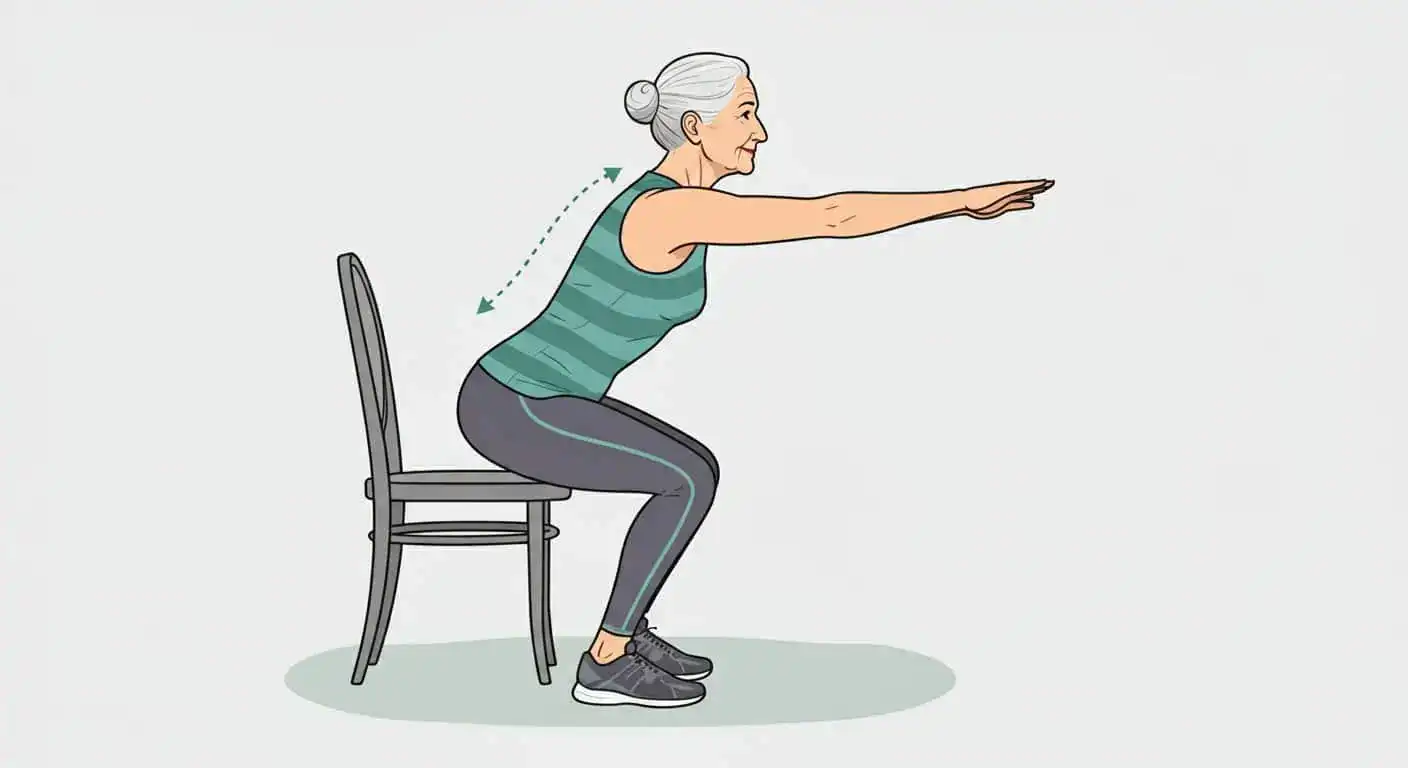
- Wall Push-Ups:
- Focus: Upper body strength (chest, shoulders, triceps).
- How to: Stand facing a wall, about an arm’s length away, with your feet shoulder-width apart. Place your palms flat against the wall at shoulder height, slightly wider than your shoulders. Slowly bend your elbows, lowering your chest towards the wall, keeping your body in a straight line from head to heels. Push back to the starting position.
- Modification for Limited Mobility: Stand closer to the wall for less resistance, or perform the exercise against a sturdy counter or table for more incline.
- Repetitions: Aim for 10-15 repetitions. Rest and repeat for 2-3 sets.
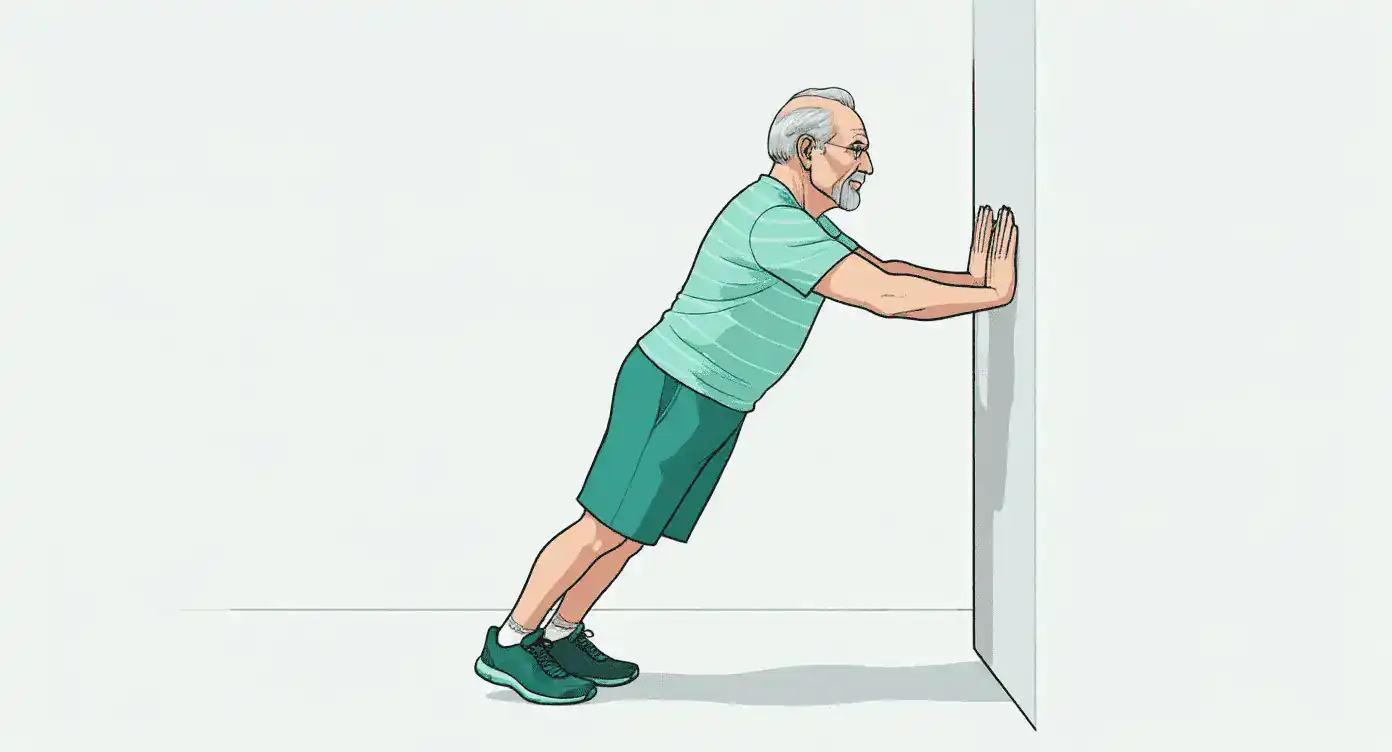
- Seated Leg Lifts (Knee Extensions):
- Focus: Quadriceps (front of thighs), core stability.
- How to: Sit tall in a sturdy chair with your feet flat on the floor, knees bent at a 90-degree angle. Slowly extend one leg straight out in front of you, engaging your thigh muscle. Hold for 2-3 seconds, then slowly lower your foot back to the starting position.
- Modification for Limited Mobility: Do not fully extend the leg if it causes discomfort. Focus on the muscle contraction.
- Repetitions: Aim for 10-15 repetitions on each leg. Rest and repeat for 2-3 sets.
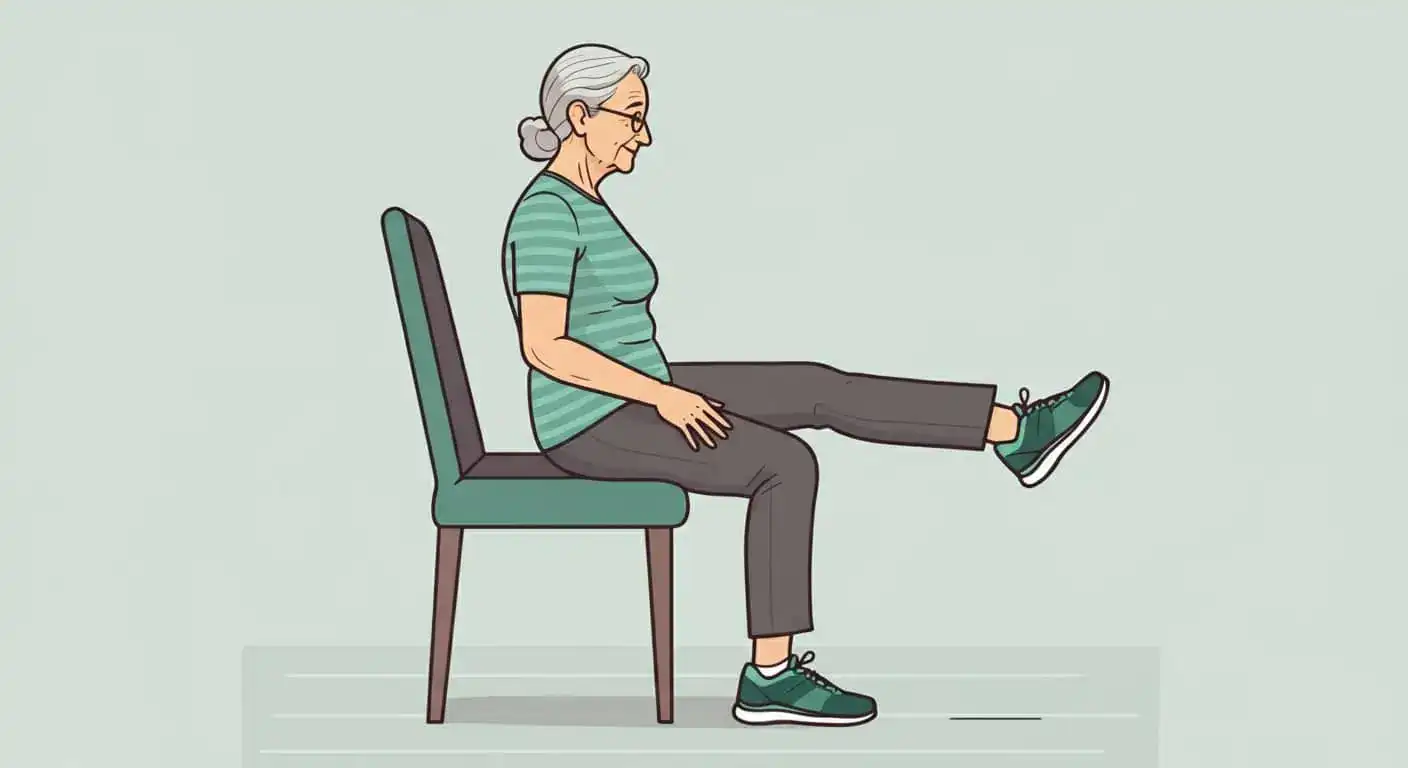
- Calf Raises:
- Focus: Calf muscles, ankle strength, balance.
- How to: Stand behind a sturdy chair or counter, holding on for support. With your feet hip-width apart, slowly raise yourself up onto the balls of your feet, lifting your heels off the ground. Hold briefly at the top, then slowly lower your heels back down.
- Modification for Limited Mobility: Perform seated calf raises by sitting in a chair with feet flat on the floor and lifting only your heels. You can also do one leg at a time if two legs are too challenging.
- Repetitions: Aim for 10-15 repetitions. Rest and repeat for 2-3 sets.
- Single-Leg Balance (with support):
- Focus: Balance, ankle stability, core.
- How to: Stand next to a sturdy chair or wall, placing one hand on it for support. Slowly lift one foot off the floor, bending your knee slightly. Try to hold this position for 10-30 seconds, maintaining a steady gaze on a fixed point. Slowly lower your foot.
- Modification for Limited Mobility: Start by just shifting your weight to one foot without lifting the other off the ground. Gradually progress to lifting your toes, then your heel, and finally your entire foot.
- Repetitions: Aim for 2-3 repetitions on each leg.
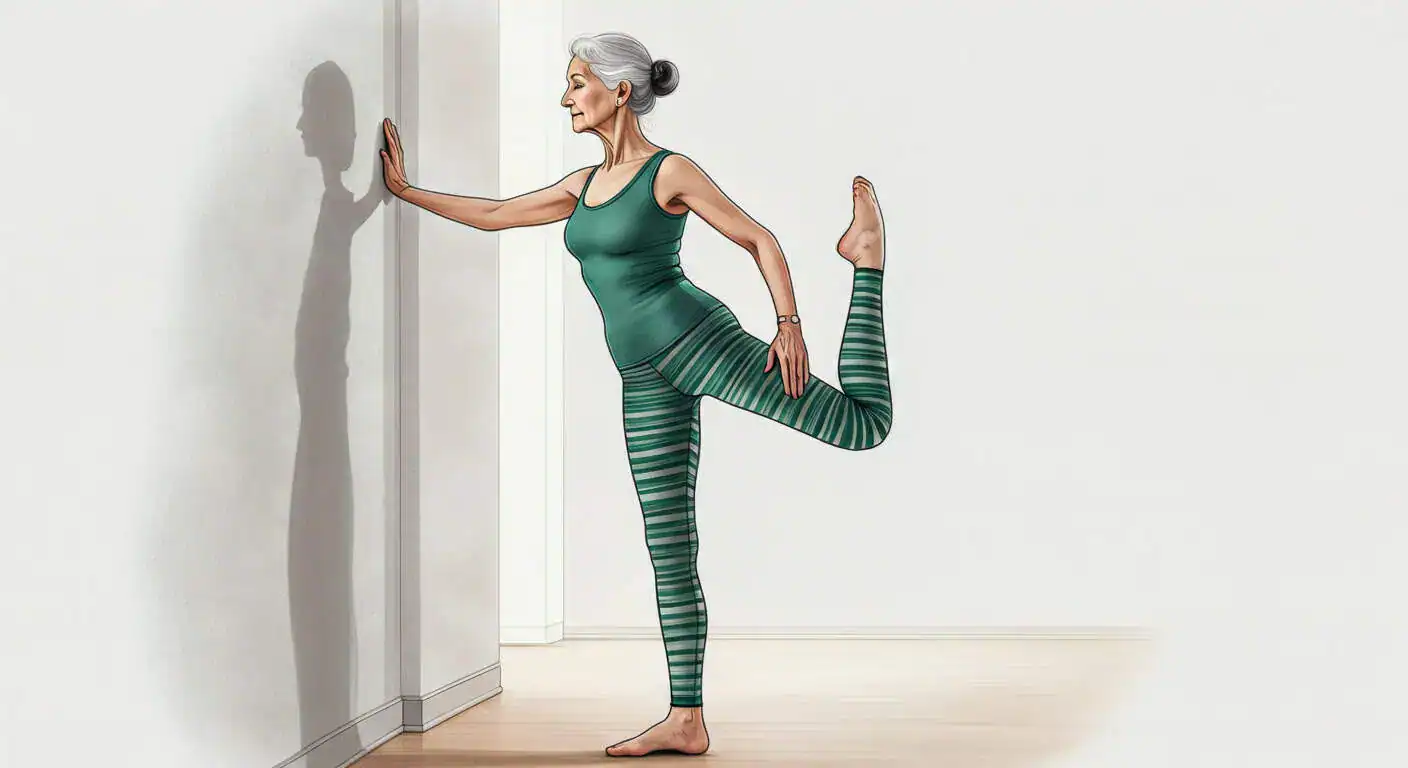
Flexibility & Mobility Exercises:
- Shoulder Rolls:
- Focus: Shoulder mobility, tension relief.
- How to: Sit or stand tall. Gently roll your shoulders forward in a circular motion, bringing them up towards your ears, then back and down. After 5-10 repetitions, reverse the direction, rolling them backward.
- Modification for Limited Mobility: Use smaller, more controlled circles if full range of motion is uncomfortable.
- Repetitions: Perform 10-15 repetitions in each direction.
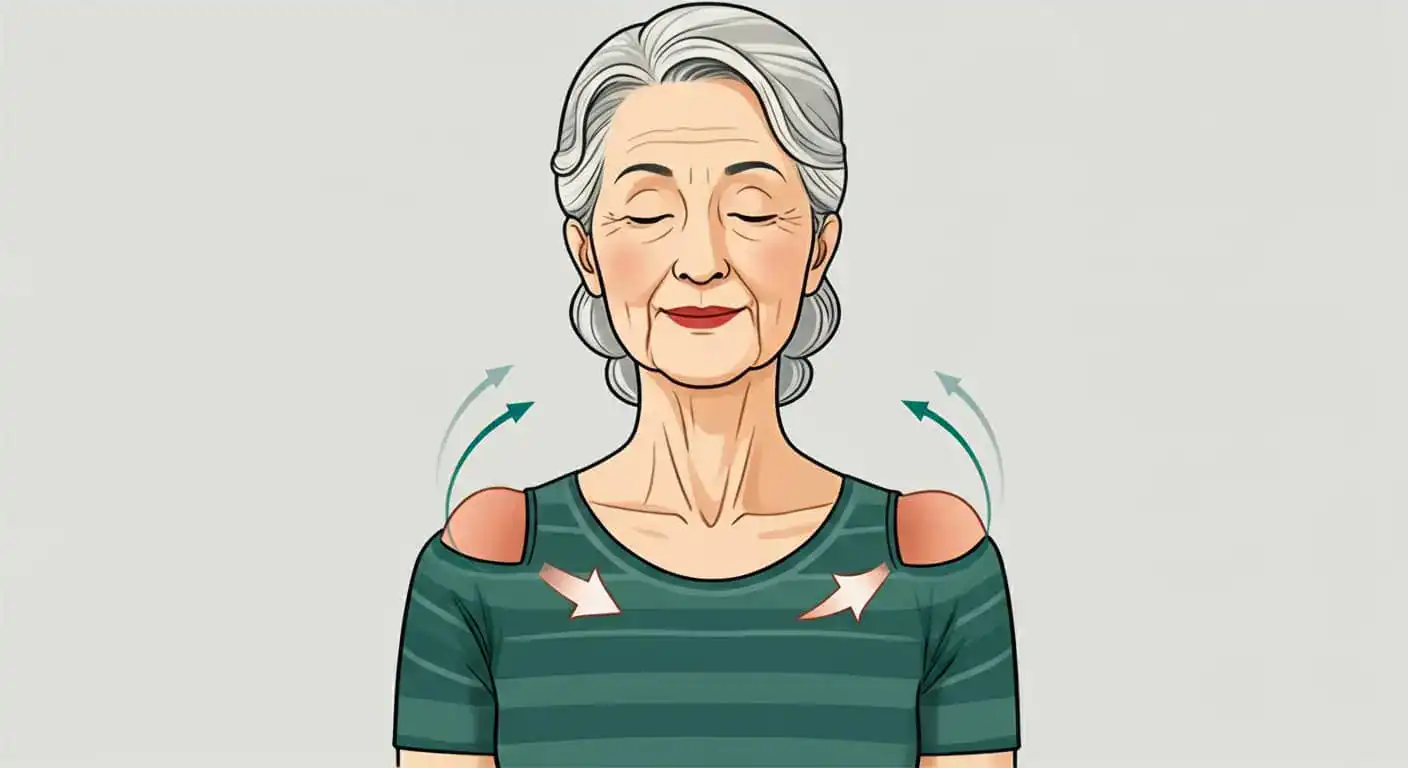
- Seated Hamstring Stretch:
- Focus: Hamstring flexibility, lower back relief.
- How to: Sit on the edge of a sturdy chair with one leg extended straight out in front of you, heel on the floor, and toes pointing up. Keep your back straight and gently lean forward from your hips, reaching towards your toes until you feel a gentle stretch in the back of your thigh. Do not round your back. Hold for 15-30 seconds.
- Modification for Limited Mobility: If reaching your toes is difficult, place your hands on your thigh or shin. Do not force the stretch.
- Repetitions: Perform 2-3 repetitions on each leg.
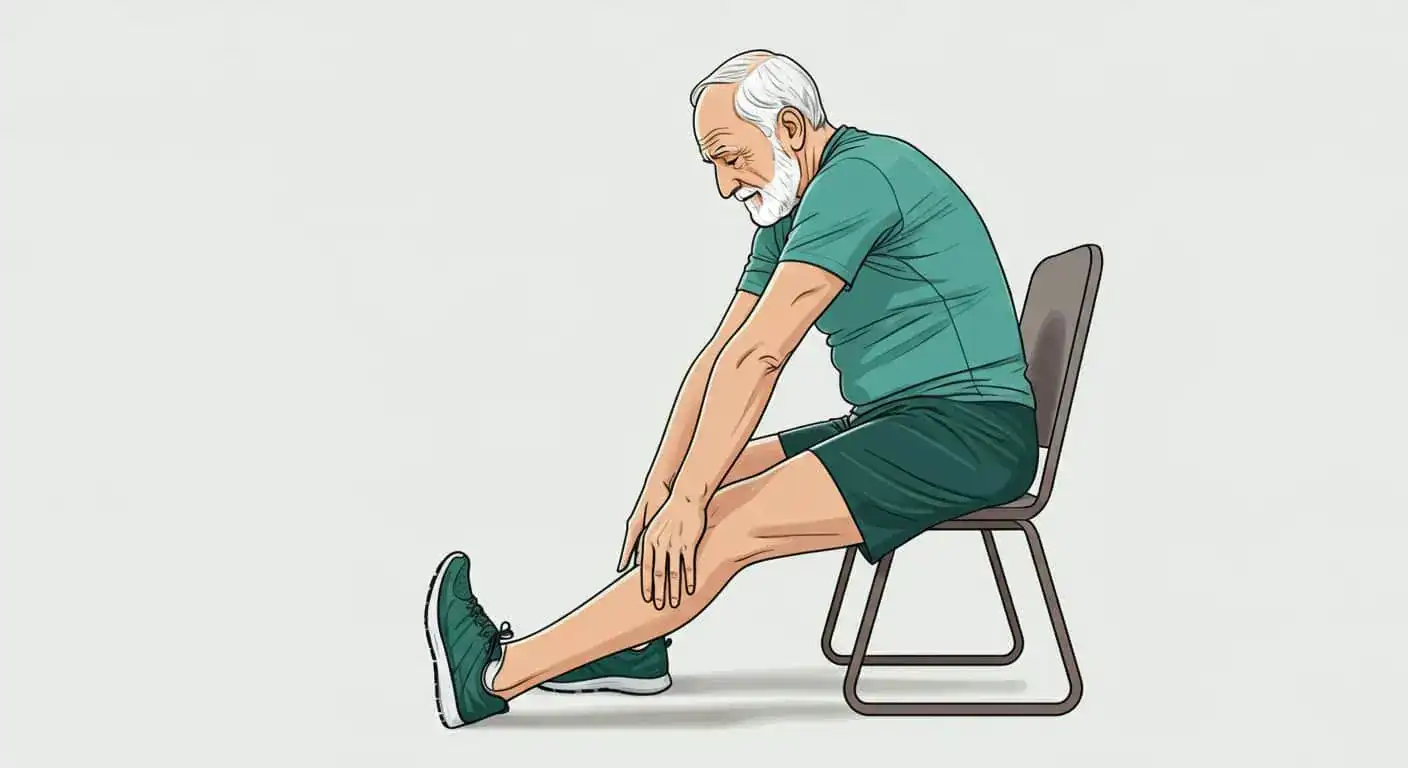
- Ankle Rotations:
- Focus: Ankle mobility, circulation.
- How to: Sit in a chair with your feet flat on the floor. Lift one foot slightly off the ground. Gently rotate your ankle in a circular motion, making small, controlled circles with your toes. After 10-15 seconds, reverse the direction.
- Modification for Limited Mobility: Perform the exercise without lifting the foot off the ground, just moving the ankle as much as comfortable.
- Repetitions: Perform 2-3 sets on each ankle.
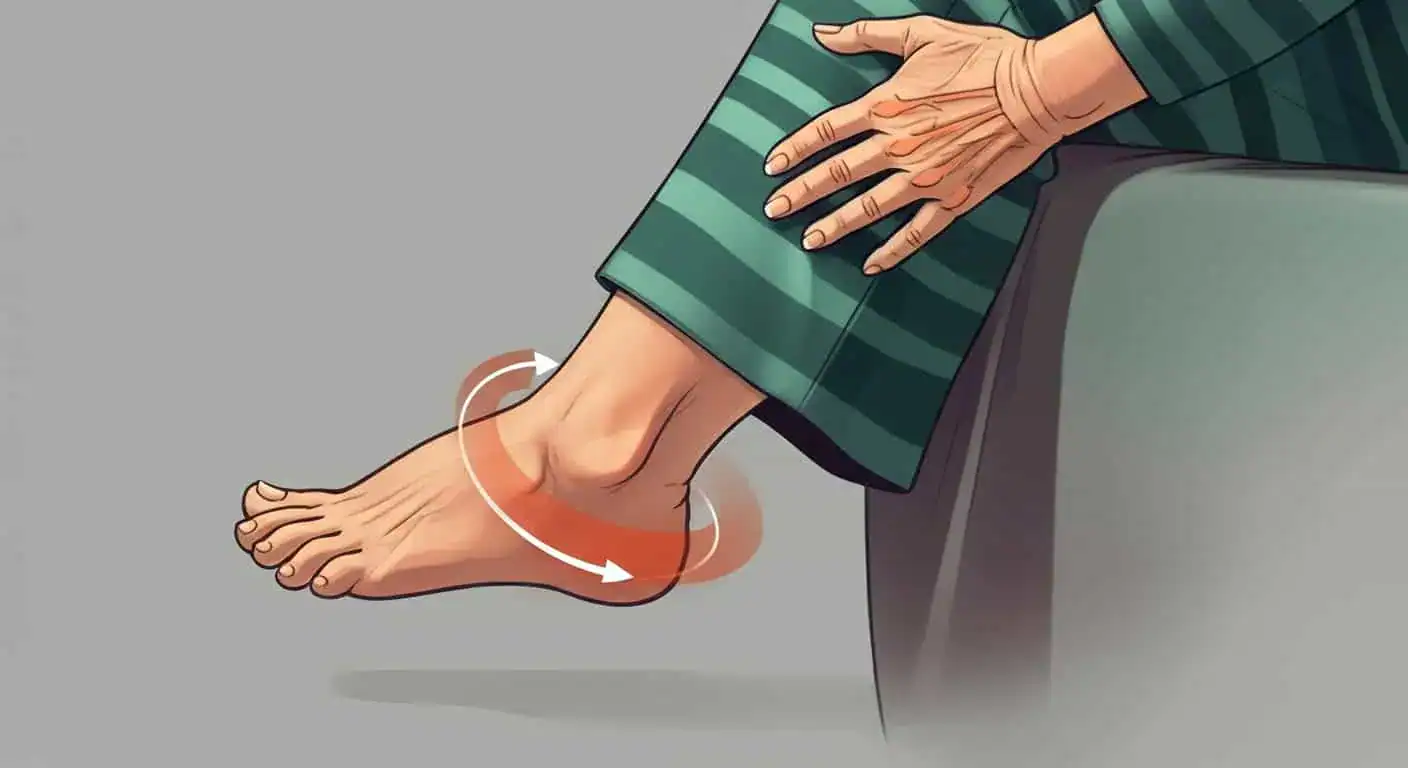
Cool-Down (5-10 minutes after your workout):
End your session with gentle stretches to help your muscles recover and improve flexibility. Hold each stretch for 15-30 seconds, breathing deeply.
- Neck Stretches: Gently tilt your head to one side, bringing your ear towards your shoulder. Hold, then repeat on the other side.
- Triceps Stretch (Overhead Arm Stretch): Raise one arm overhead, bend your elbow, and let your hand fall behind your head. Use your other hand to gently press down on the bent elbow, feeling a stretch in the back of your upper arm. Repeat on the other side.
- Seated Spinal Twist: Sit tall in a chair. Gently twist your upper body to one side, placing one hand on the back of the chair and the other on your opposite knee for support. Look over your shoulder. Hold, then repeat on the other side.
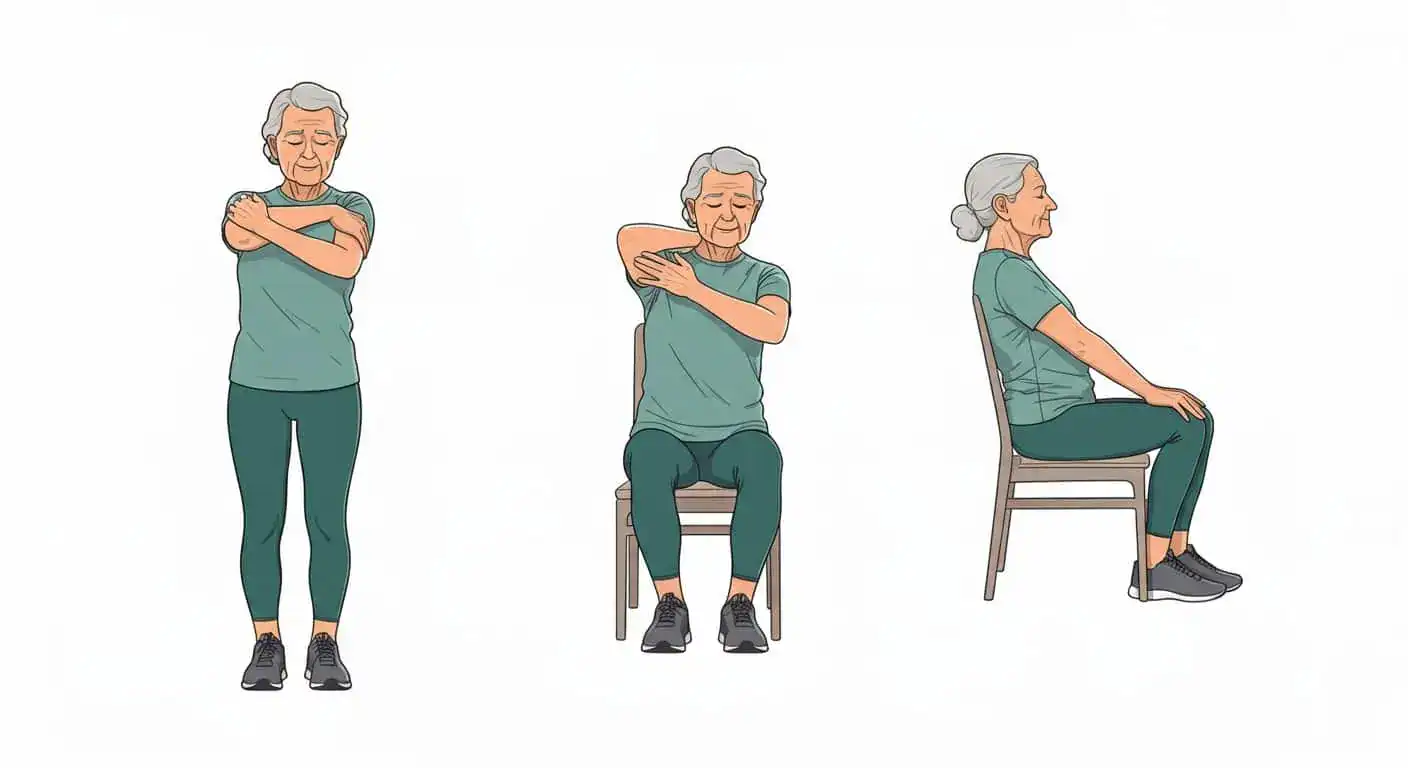
Essential Equipment for Your Home Workouts
One of the greatest advantages of home exercises for seniors is the minimal equipment required. You likely have most of what you need already!
- Sturdy Chair: Essential for balance support, seated exercises, and modifications. Look for one without wheels and with a stable back.
- Comfortable Clothing and Supportive Shoes: Important for safety and freedom of movement.
- Water Bottle: To stay hydrated throughout your workout.
- Optional (but beneficial):
- Resistance Bands: Lightweight, portable, and offer varying levels of resistance for strength training.
- Light Dumbbells (1-5 lbs): Can be household items like water bottles or cans of soup when starting out.
- Yoga Mat: Provides cushioning for floor exercises, if applicable.
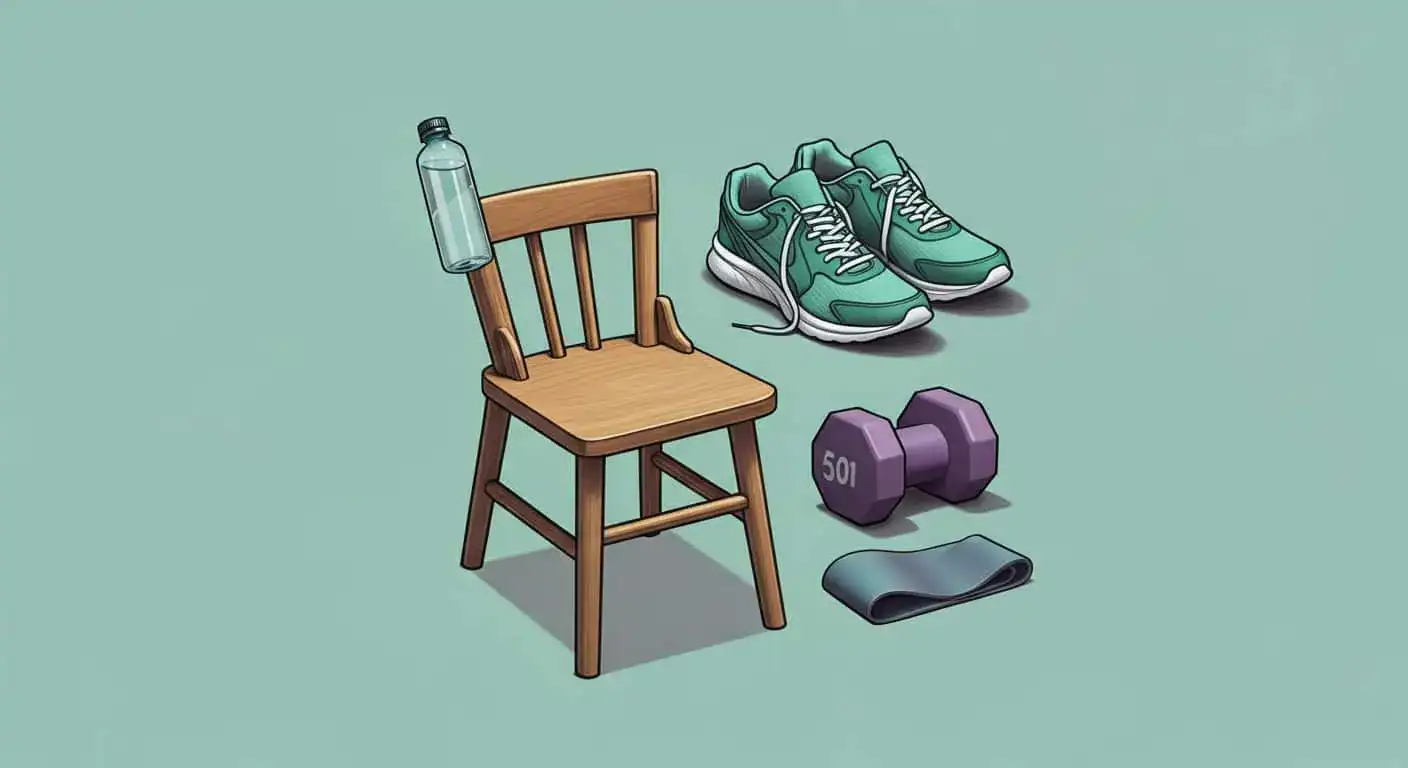
Beyond the Exercises: Holistic Well-being for Seniors
While exercise is a cornerstone of healthy aging, it thrives when combined with other healthy lifestyle choices.
- Nutrition: Focus on a balanced diet rich in fruits, vegetables, lean proteins, and whole grains. Stay hydrated. The National Institute on Aging offers excellent resources for healthy eating for older adults.
- Adequate Sleep: Aim for 7-9 hours of quality sleep per night.
- Social Connection: Stay connected with friends, family, and your community to foster mental and emotional well-being.
- Regular Medical Check-ups: Continue with routine doctor visits to monitor your health and address any concerns proactively.
- Mindfulness and Stress Reduction: Practices like meditation or deep breathing can help manage stress and promote a sense of calm.

Making it a Habit: Staying Motivated
Starting an exercise routine is one thing; sticking with it is another. Here are some tips to help you stay motivated:
- Set Realistic Goals: Don’t aim for perfection overnight. Small, achievable goals will keep you encouraged.
- Find an Accountability Partner: Exercise with a friend, family member, or caregiver.
- Track Your Progress: Keep a simple log of your workouts. Seeing how far you’ve come can be a powerful motivator.
- Make it Enjoyable: Choose exercises you genuinely like. Put on your favorite music, listen to a podcast, or even exercise while watching TV.
- Vary Your Routine: Prevent boredom by mixing up your exercises. Explore online resources for new senior-friendly workouts.
- Celebrate Milestones: Acknowledge your efforts and successes, no matter how small.

